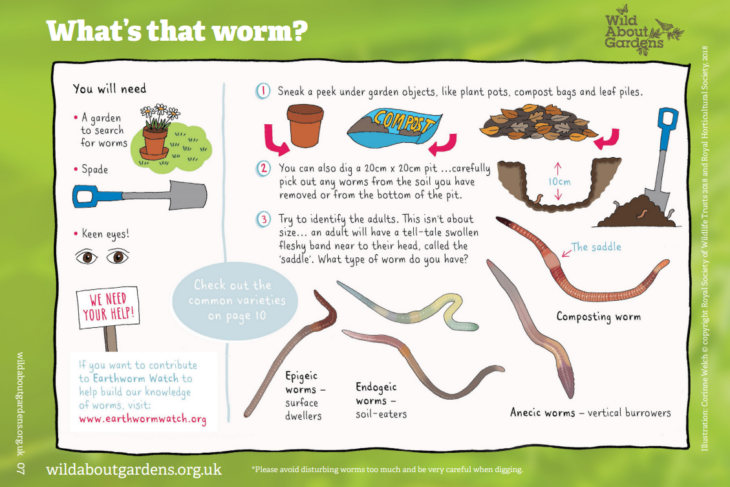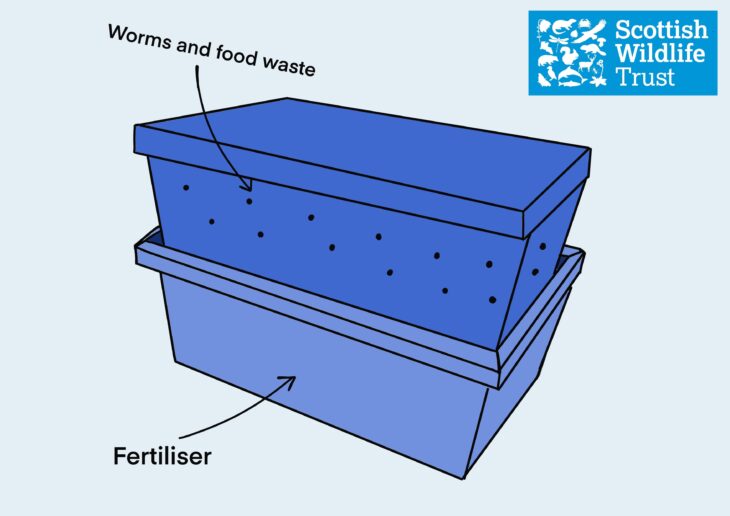Worms are often forgotten about, and when you come across one, it might be followed by the word ‘EW!’ But worms play a very important part in our ecosystem as they make healthy soil by breaking down natural materials.
There are over 5,000 species and Charles Darwin once said, “it may be doubted whether there are many other animals which have played so important part in the history of the world, as have these lowly organised creatures.”
You can utilise the superpower of the worms today through making a worm composter! They are a great way to dispose of food waste and create natural composter to boost your soil and plant health. The goal of worm composters is to create a dark space with good ventilation and drainage. Below are instructions on how to do it!
Extra: Link your worm composter to lessons about waste. In this composter, natural materials can be broken down and benefit the rest of the environment. What happens to other objects when we don’t want them anymore?
You can head over to Wild About Gardens website and download their Go Wild for Worms booklet, which includes great information and resources!

What you will need:
- Three old plastic storage container that can stack on top of each other, including one lid
- Drill
- Bricks
- Pieces of fine screen (optional)
- Peat-free compost
- Food scraps
- Worms
- Newspaper

How to make you worm composter:
- Before you start to build your worm composter, you need to think about what worms you will use. Your selection of worms will depend on whether your composter is inside or outside. You can buy composting worms online usually for under £10.
- After you have found your worms, the next step is to build your composter!
- The first step is to drill around 10 holes into the bottom and sides of the plastic containers. The holes on the side help air ventilation, and the holes in the bottom help with drainage and let the worms to travel to different boxes.
- Place the third box in a shaded areas and add bricks in the bottom for some weight to the structure.
- Stack the other boxes on top, adding bricks to the second box but no bricks to the final top box.
- Line the top box with newspaper to keep the worms in that box. Once your top box is full, you can remove the newspaper and the worms will travel down to the lower level.
- Add 3cm of damp compost to the top box. Then add some worms and more damp compost so they are buried in it. Add the lid and leave them for around a week to settle into their new home.
- Afterwards you can start to feed your worms your food scraps. This can include plastic-free tea bags, banana skins, vegetable peelings, coffee grounds and eggshells. Do not add too much citrus, garlic, or onions. And never add any meat or dairy waste.
- Worms eat half their body weight every day! So, add the amount of food that is appropriate for the number of worms you have. You can help them by chopping the food scraps into smaller pieces and adding scraps of newspaper to keep the moisture level correct.
- Once the top box is full, switch it with the middle box. To encourage the worms to slowly move up to the new top box, add more food and some of the old compost to the new box.
- After the worms have migrated, you can use the compost in you garden to help the plants. ‘Worm tea’ will collect in the bottom box as well, and when you dilute it with water it creates a great fertiliser.
- You can check on your worms as they munch away at your waste. Are there certain foods they don’t seem to like? Or is the food disappearing quicker than you thought? Make sure to check up on other visitors who manage to sneak in and remove them if they threaten your worm friends.
Share photos of your worm composter using #DiscoverLearnPlay
